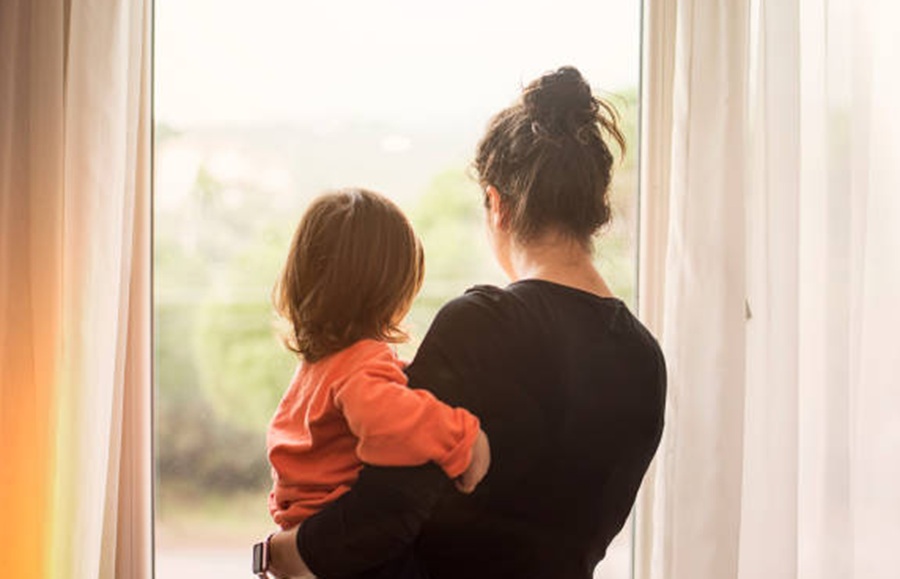Mothers in Italy are ever more alone and penalised, Save The Children said Tuesday. The report added they are the most at risk of poverty.
The Italian birth rate hit a record low in 2024, with only 370,000 children born; down 2.6% from 2023. This marks the lowest figure ever recorded in the country. The total fertility rate also fell to 1.18 children per woman, even below the previous record low of 1.19 in 1995. The average age of mothers at childbirth rose to 32.6 years.
The declines were most significant in southern Italy and the islands, with births falling by 4.2% and 4.9% respectively.
These figures come from the latest edition of Le Equilibriste – Motherhood in Italy, an annual report by Save the Children, which was released in the run-up to Mother’s Day. The report paints a stark picture of motherhood in Italy, particularly for single mothers, and highlights long-standing issues of gender inequality, inadequate childcare support, and employment challenges.
Italy ranks low on global gender equality
Italy ranks 96th out of 146 countries for female participation in the labour market and 95th for the gender pay gap, according to the World Economic Forum. The report underlines how motherhood negatively impacts women’s economic stability, with 26.6% of women at risk of low-income work. This is compared to 16.8% of men.
The disparity increases significantly after childbirth. While 91.5% of fathers are employed, only 62.3% of mothers are in work. The employment rate drops even further for women with two or more children, falling to 60.1%.
Moreover, 20% of women leave the workforce after becoming mothers, often due to the lack of accessible early childhood services and poor division of care responsibilities in the home. Among mothers of children with disabilities, this figure rises to an estimated 35%.
Wide regional and social disparities
The report reveals strong territorial divides across Italy. In the north, 96.3% of fathers with children under 18 are employed, compared to 74.2% of mothers. In the south, employment rates for mothers fall to just 44.3%, with similarly low rates for women without children (49.4%).
Data on voluntary resignations highlights the scale of gender inequality: 72.8% of resignations among parents of children aged 0–3 are by mothers, and in nearly all cases (96.8%) these are voluntary. The main reasons cited include the incompatibility of work schedules and inadequate childcare services.
Single Mothers Face the Greatest Challenges
Single-parent families have increased by 44% over the past decade, rising from 2.65 million in 2011 to 3.8 million in 2021. Over 77% of these are headed by single mothers, who are among the most vulnerable to poverty and social exclusion.
In 2024, 32.1% of single-parent households are at risk of poverty or social exclusion—compared to the national average of 23.1% and just 21.2% for couples with children. Income data shows stark disparities: single mothers with children earn an average net income of €26,822 per year, while single fathers in the same position earn €35,383.
Housing insecurity is another pressing issue. About one in three single mothers (31.5%) live in rented accommodation, and just over half (53.2%) live in owned housing. This compares to 71.9% of single fathers with children.
Mothers’ Index Highlights Regional Gaps
Save the Children’s Mothers’ Index, compiled in collaboration with ISTAT, ranks Italian regions according to how well they support motherhood. For the second year running, the Autonomous Province of Bolzano tops the list, followed by Emilia-Romagna and Tuscany. At the bottom of the index are Basilicata, Campania, Puglia, and Calabria.
There are signs of modest progress. Between 2022 and 2024, the overall score of the Mothers’ Index improved slightly, and the regional gap narrowed. However, Save the Children says much more needs to be done.
Calls for Structural Reforms
The report includes a Tortuga Think Tank estimate showing that reducing childcare costs could significantly lower the so-called child penalty. This is the loss in employment and income faced by women after having children. In Italy, parenthood accounts for 60% of the employment gap between men and women. The child penalty currently stands at 33%.
- A 30% reduction in childcare costs could reduce the penalty to between 28.5% and 27.6%.
- A 90% reduction could lower it to 19.5–16.8%.
Currently, full-time employment among women aged 25–54 drops from 77.8% (childless) to 64.4% (with at least one minor child). Conversely, part-time work rises from 22.2% to 35.6%.
Giorgia D’Errico, Save the Children’s Director of Public Affairs, said,
“Even today, gender inequalities in the world of work and beyond, the imbalance of care burdens to the detriment of women, the insufficiency or complete absence of early childhood services affect the life and well-being of mothers.
“We need structural, integrated and long-lasting policies that guarantee resources and tools to support families in caring for their children and in reconciling private and professional life.
“Only in this way will we be able to build a future in which parenthood, work and private life are not in conflict, but can coexist as part of a project of individual and collective well-being.”





